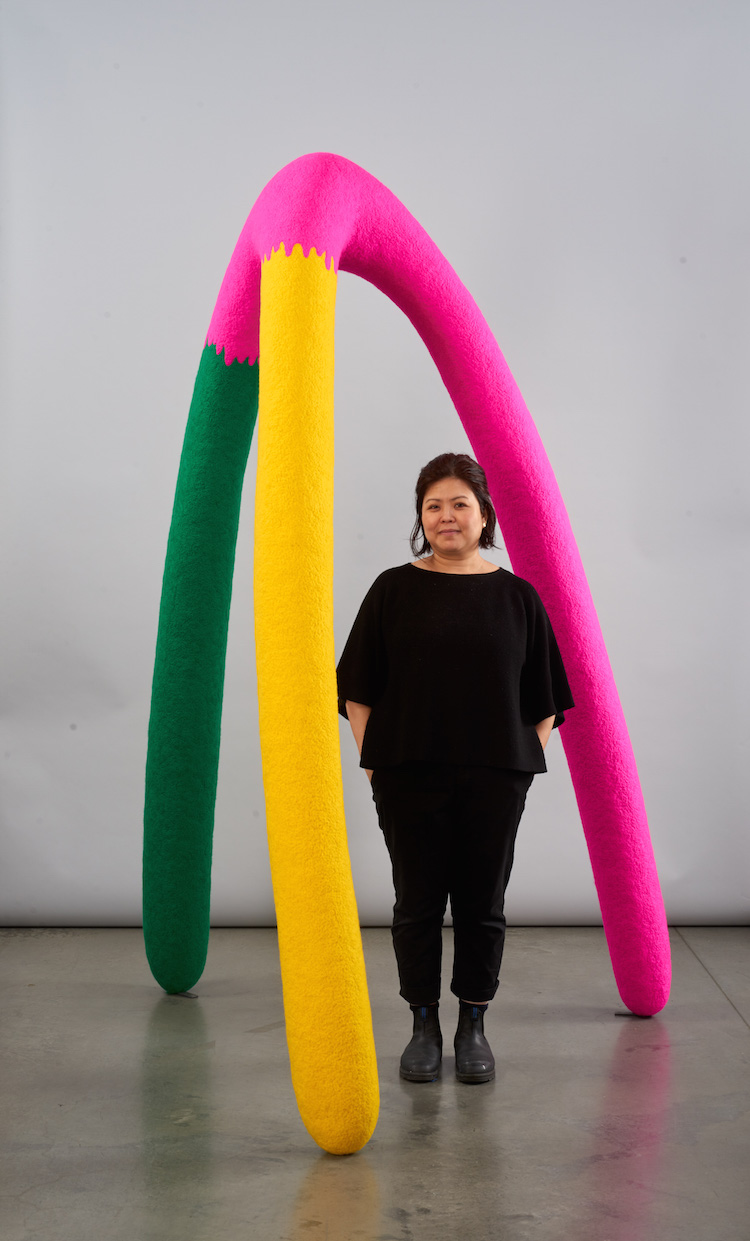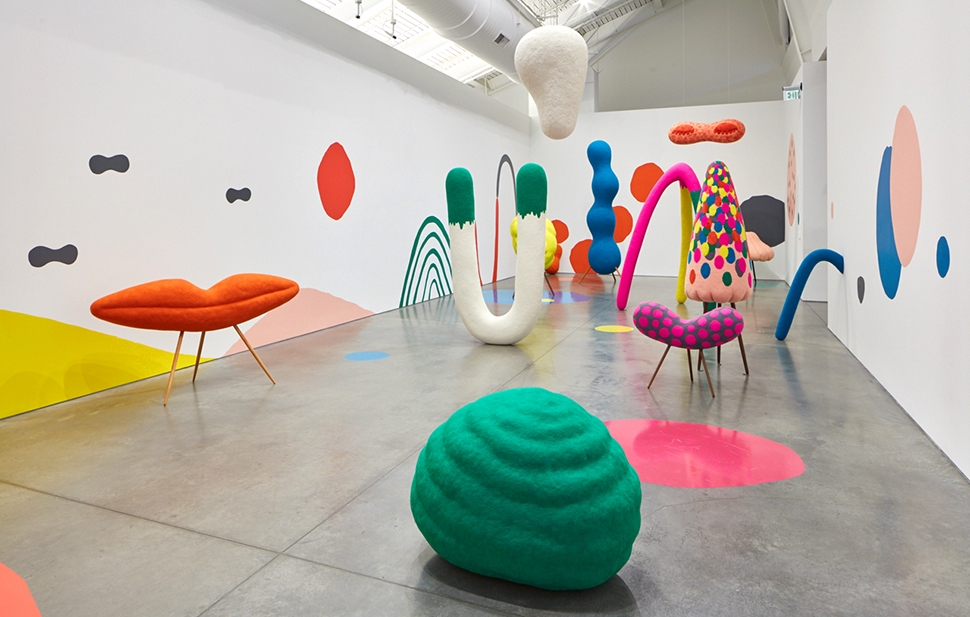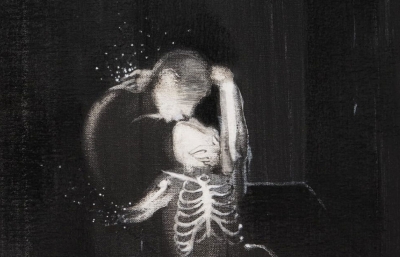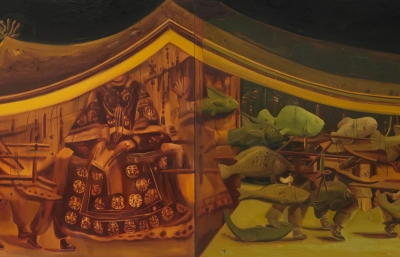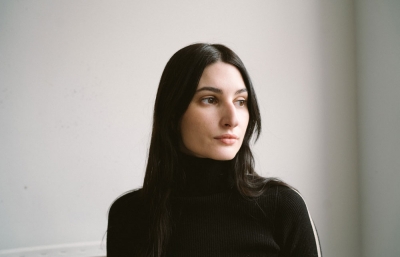You said it felt like cheating to use technology to make them.
I consider myself very much an analog artist. My art-making process has been very simple in terms of materials and tools. For my drawing, I just need paper and a pen; for felt sculpture, I need wool and a needle. The work is completed by repetitions of mark-making and needling. It was very interesting to see my process involving technology like 3D scanning and CNC machine carving. I have never taken this many significant steps with my work utilizing technology. It has always has been supplemental, and it offers convenience, but I have been learning how technology can provide more options and possibilities. In fact, currently I am collaborating with a bronze foundry to create outdoor sculpture pieces, and they use 3D printing technology. However, more involvement in the digital realm made me realize the importance of the analog realm. I still had to make everything by hand to do 3D scanning, and I could only finish felting them by hand. Analog processes are never replaceable. There is no substitution for this process.
How many times have you stabbed yourself with felting needles?
So many! It goes through pretty deeply, so it’s quite painful for a while. I also broke countless needles. It takes some practice to not break a needle during felting, so I have to keep my needle on a 90-degree angle to the surface.
